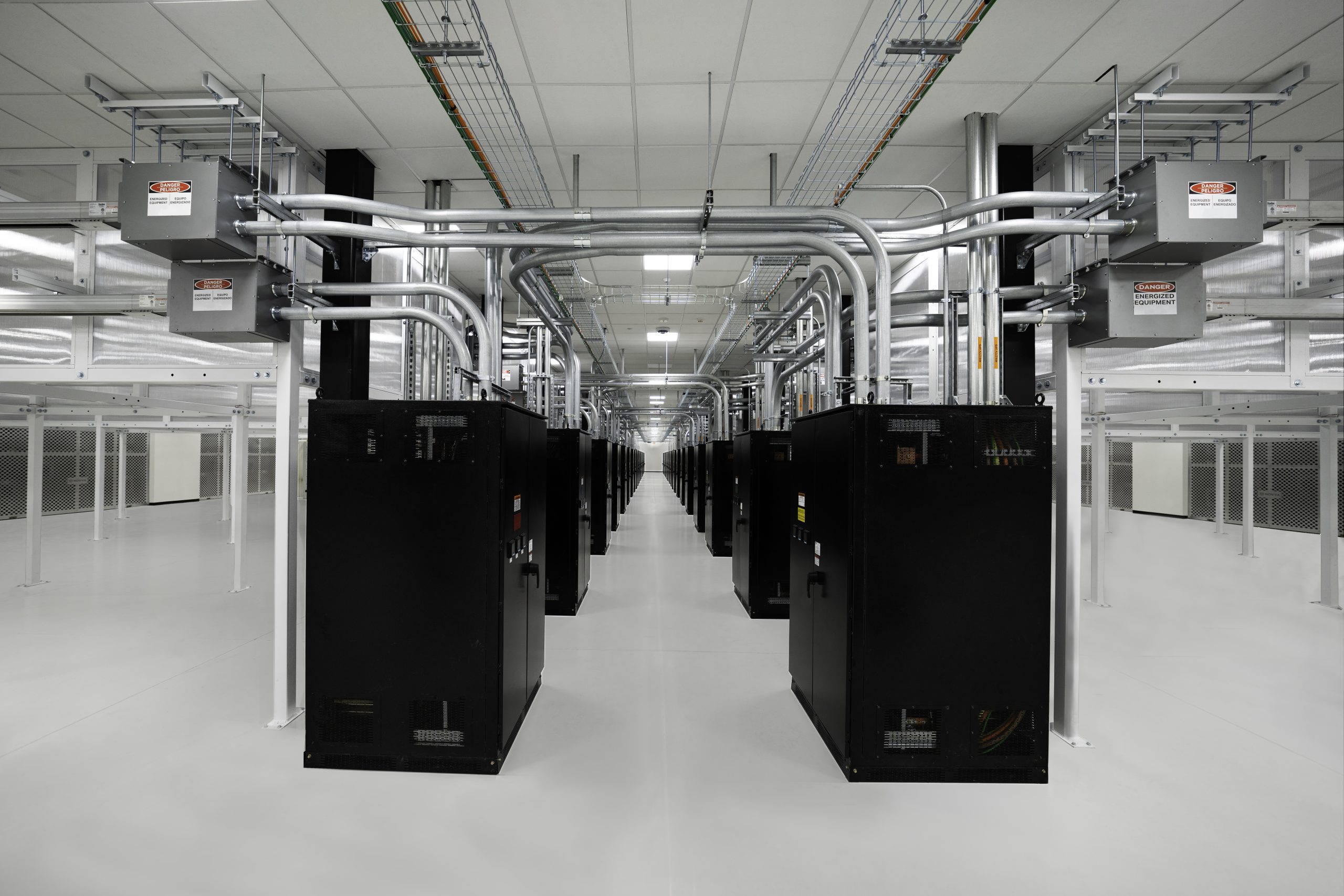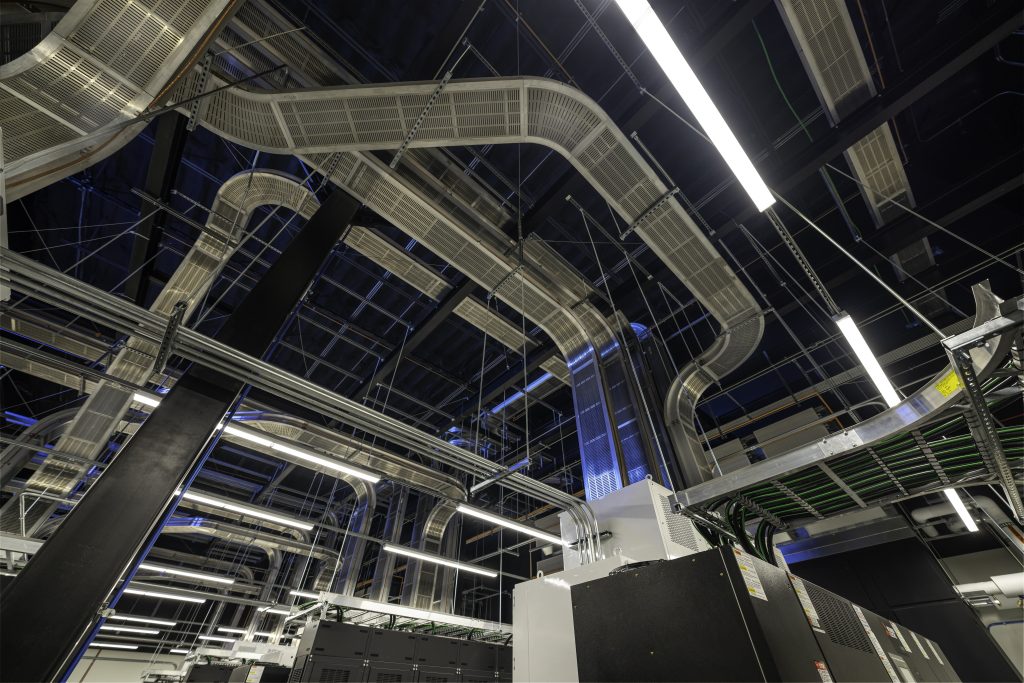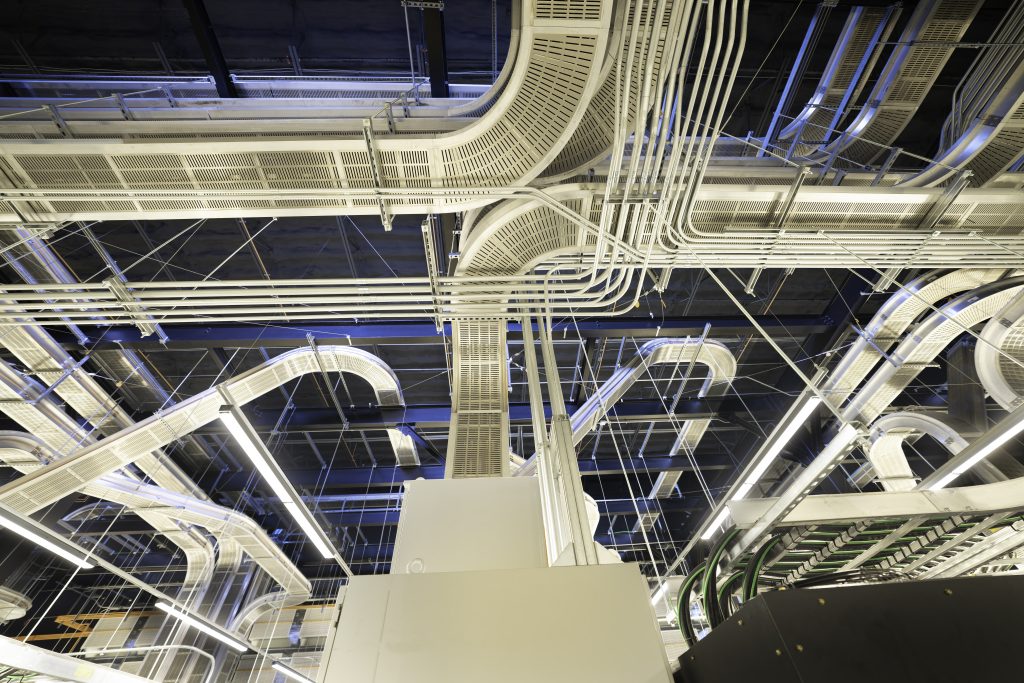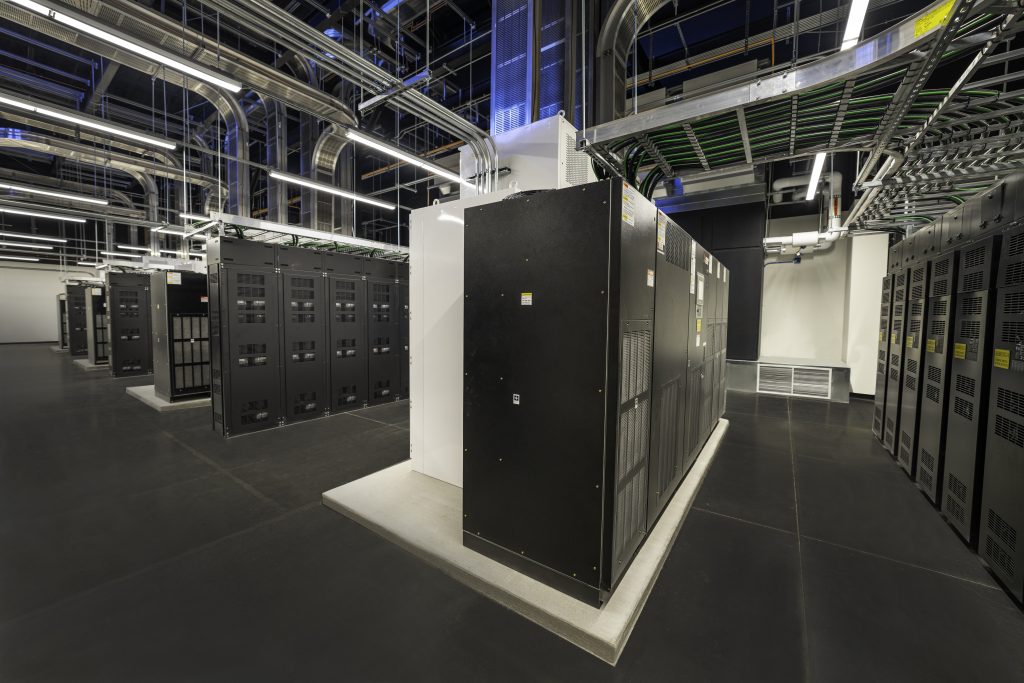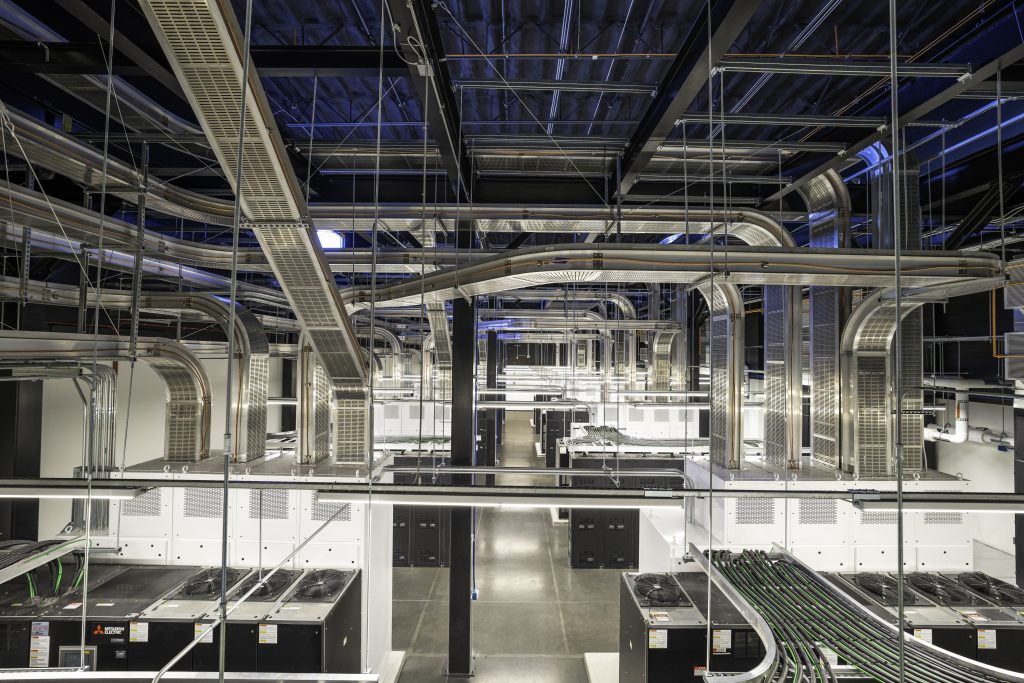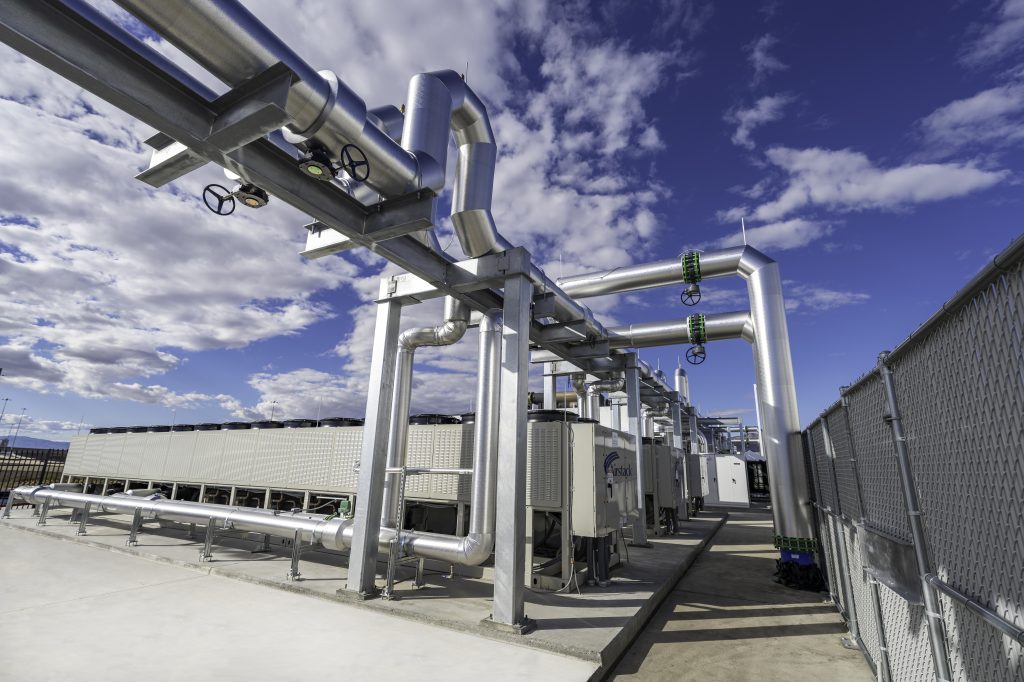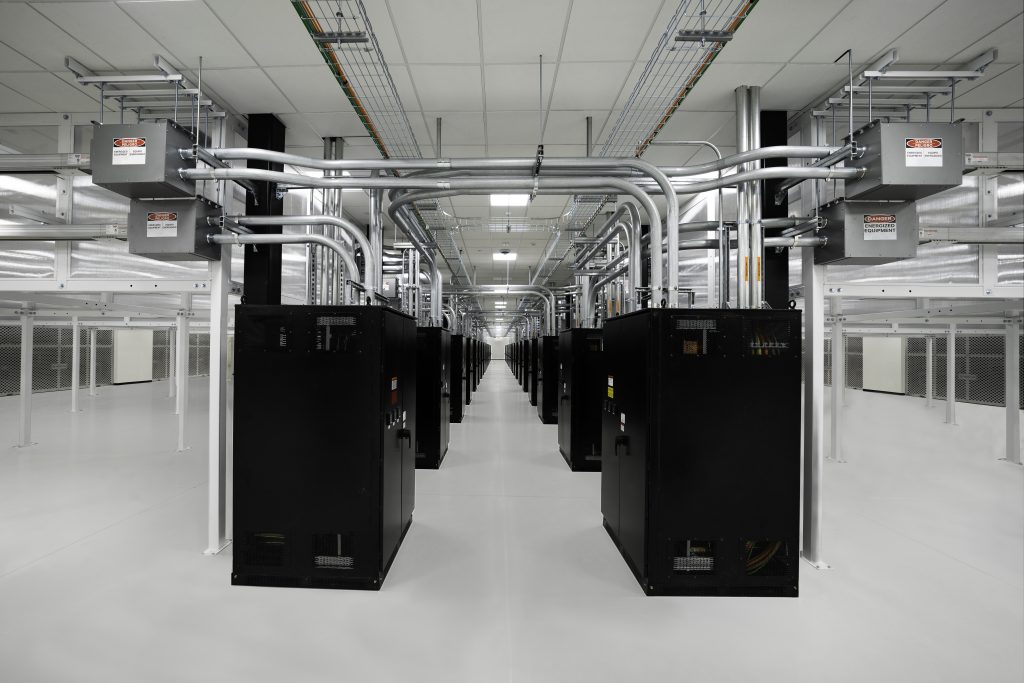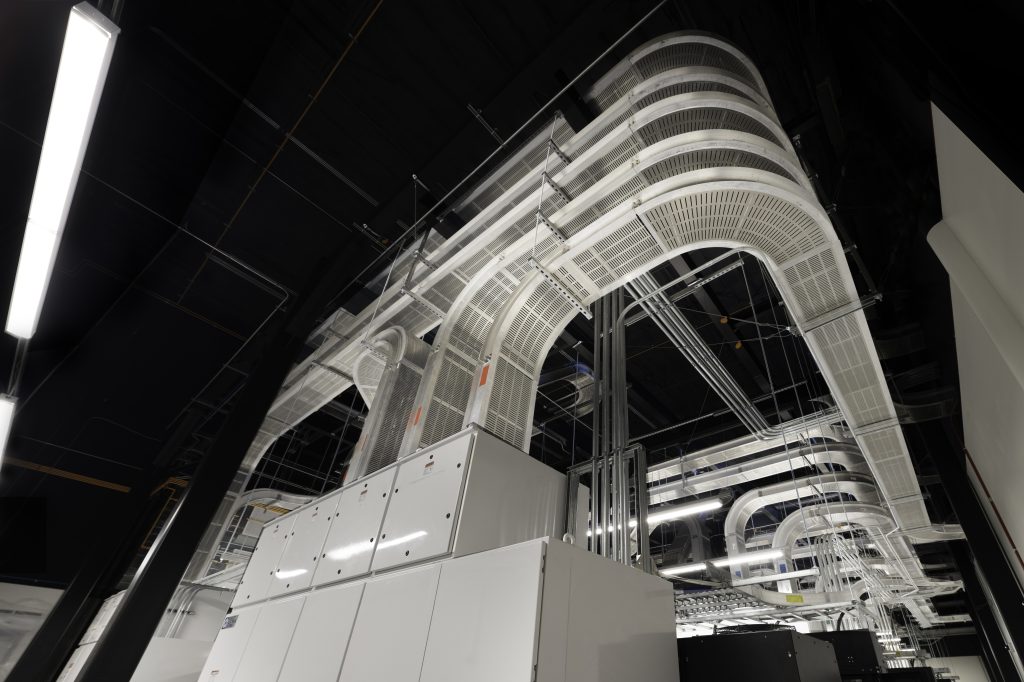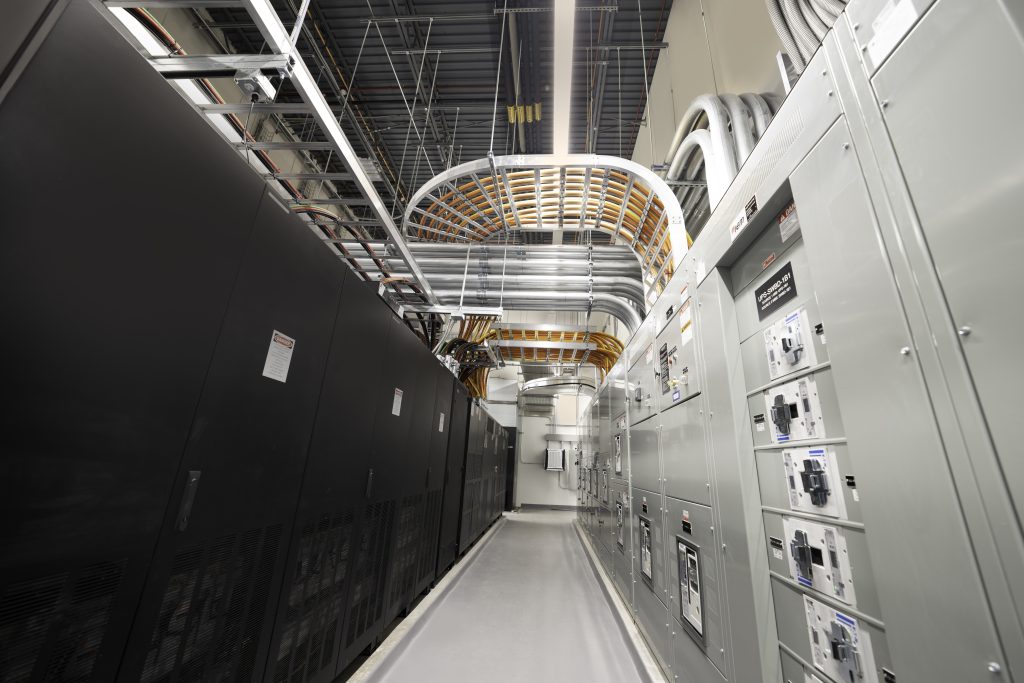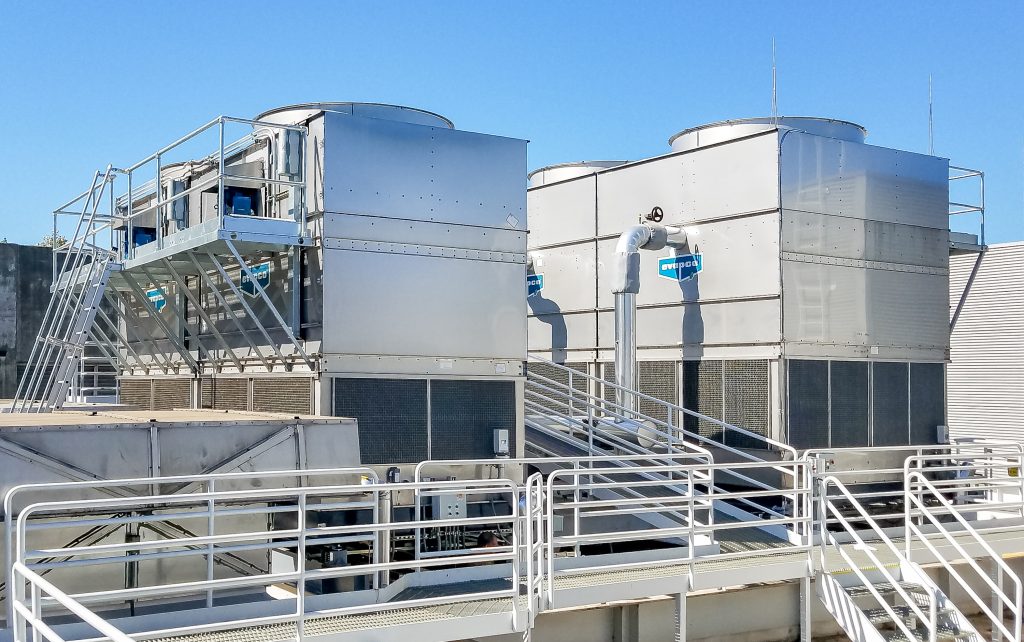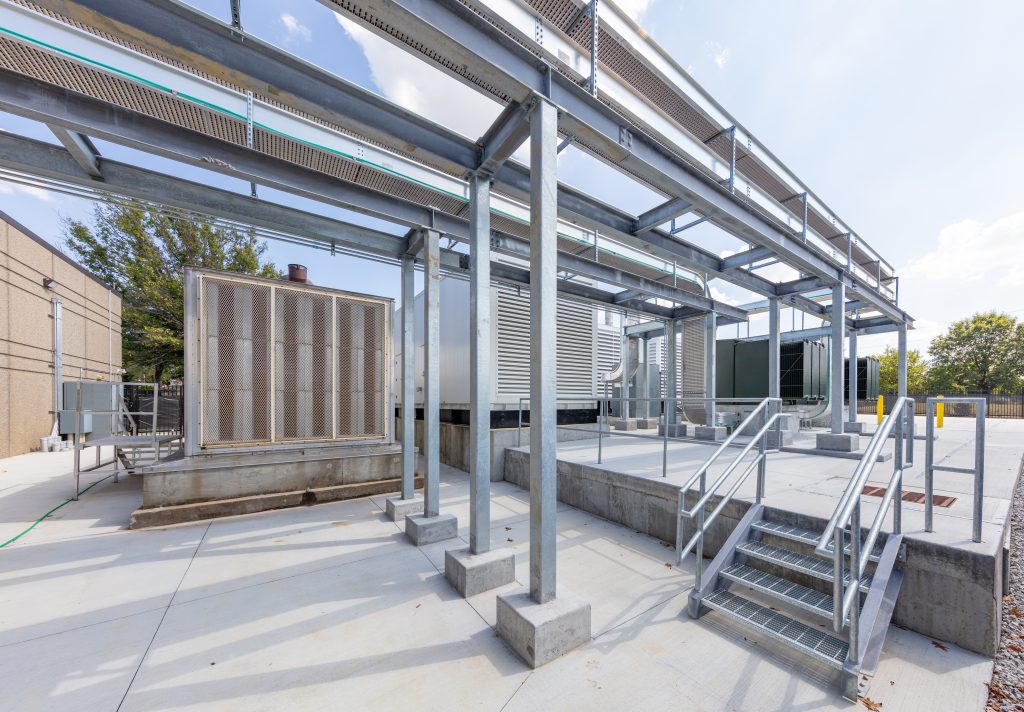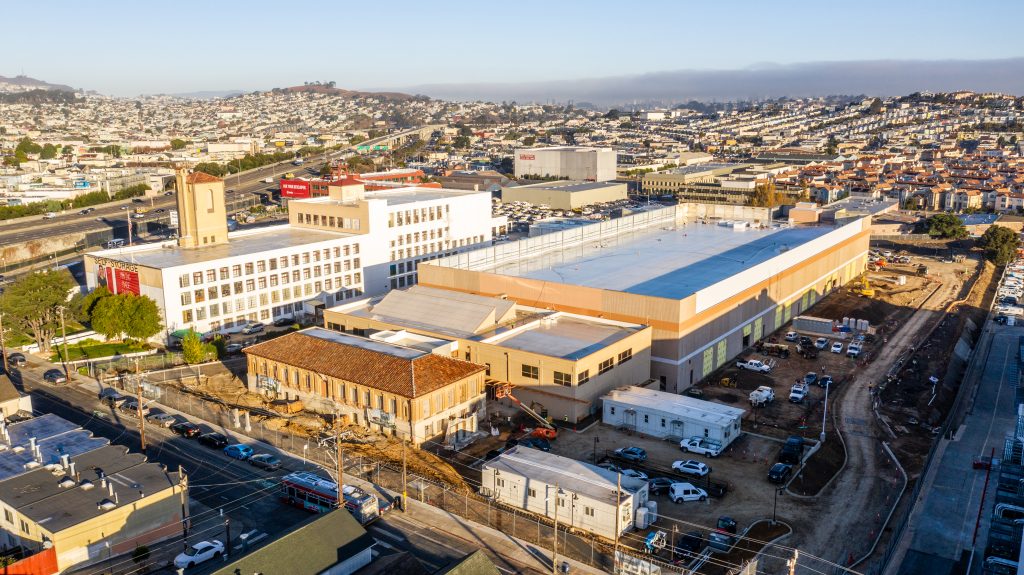The new design eliminated traditional raised floors in favor of horizontal-flow fan
wall systems for mechanical efficiency. Sixty-six air-cooled chillers connected to
a closed-loop glycol water system formed the backbone of the cooling strategy.
Electrical infrastructure featured 24 IT generators and 10 equipment generators
with robust N+2/N+3 redundancy—coordinated through MMRs and UPS rooms.
To overcome supply chain challenges, SiTESPAN led weekly coordination
meetings with vendors and stakeholders, aligning equipment delivery with build
sequences and avoiding cascading delays.
Phase I, which included two data halls, customer offices, tenant spaces, and
supporting infrastructure, was delivered on time in early 2024 using SiTESPAN’s
integrated design-build model.
The Quasar facility is a prime example of SiTESPAN’s role as a strategic partner,
not just a vendor. It demonstrates how a conventional facility can be structurally,
operationally, and mechanically transformed to meet the exacting demands of a
modern mission-critical environment—with speed, resilience, and precision.

